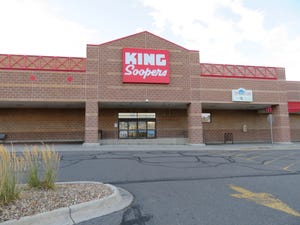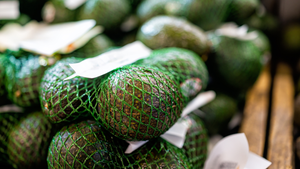SQUEAKY CLEANSQUEAKY CLEAN
THEY SMELL GREAT. They perform well. They're good for you and for Mother Earth. Such a multisensory message helps explain why environmentally friendly, natural-ingredient household cleaners once available almost exclusively from select retailers and online are growing this year in double-digit dollar increments for both conventional and natural food stores. According to the most recent 52-week data
June 1, 2007
LIZ PARKS
THEY SMELL GREAT. They perform well. They're good for you and for Mother Earth.
Such a multisensory message helps explain why environmentally friendly, natural-ingredient household cleaners — once available almost exclusively from select retailers and online — are growing this year in double-digit dollar increments for both conventional and natural food stores.
According to the most recent 52-week data tracked by sales data provider SPINS, dollar sales of environmentally friendly, natural cleaners sold in conventional supermarkets increased 15.7%, to $56.7 million, for the 12 months that ended Jan. 27, 2007.
The category is growing at virtually the same rate in supermarkets as it is in natural food stores, though distribution is more limited in the supermarket class of trade. Some retailers, too, report flat sales.
The category is performing so well for some supermarkets, though, that chains like Price Chopper, Schenectady, N.Y.; Kowalski's Markets, St. Paul, Minn.; and Lakeland, Fla.-based Publix are adding more SKUs to their product mix and doubling the space they give the category.
Kowalski's, which operates eight supermarkets, is seeing an acceleration of growth in environmentally friendly household cleaners, so much so that six months ago, it expanded its original, two-year-old, 4-foot planogram for natural cleaners to 8 feet and now carries more than 100 SKUs, according to Debbie Leland, the chain's specialty and natural foods buyer.
The department, even though it is located directly adjacent to the traditional household cleaning aisle, has its own banner — Natural Path — to make it easier for customers to find the alternative formulas.
“People are becoming more and more aware of the health benefits of all the products they use, not just the foods they eat,” said Leland. “Everything that our skin comes into contact with is absorbed directly into our bloodstreams, so you want safe, clean products that are not toxic, especially if you have children or people in your household suffering from airborne allergies or sensitivities to things that are breathed into their systems.”
Leland said she carries a wide variety of brands, including Seventh Generation, Earth Friendly, Mrs. Meyer's and Restore, among others. “There are more products out there than we can put in our stores,” she said.
Some retailers cite the higher price point of natural cleaners when discussing barriers to sales. Most of these products can be more expensive, but Leland believes package size and purchase frequency work in favor of sales growth.
“These aren't products that people buy every single day or every week, so people aren't hesitating to pay for cleaning products that they feel will be healthier and better for the planet,” she said.
Kowalski's often promotes natural-ingredient cleaners with ads and displays featuring temporary price reductions; they also partner with manufacturers to conduct sampling.
Publix, which has carried green cleaning products in selected stores for quite some time, recently made the decision to start carrying some of these items in all of its 901 stores.
“There seems to be a growing desire among many of our customers to purchase environmentally friendly items,” said spokeswoman Maria Brous, adding that a major factor driving customer purchases is “their obvious desire to help protect the environment.”
Select Publix stores have a separate GreenWise cleaning section and stock an expanded variety of cleaners.
“Merchandising eco-friendly items in the mainstream section provides an alternative to customers who are concerned about the environment, but not passionate enough about it to go shop a separate section,” said Brous.
“Merchandising the items in a separate section,” she added, meets the needs of customers who “have a desire and a willingness to look for these products in a separate section.”
Publix has expanded distribution of several Seventh Generation cleaning products into all of its stores, merchandising them within various mainstream cleaning categories. Select stores also carry a variety of other brands, including Earth Friendly and Ecover.
Publix is using various promotional vehicles to promote the cleaners, including the chain's own Publix GreenWise magazine, “to make it easier for customers to find the items they are interested in as well as to provide them information about those items.”
Green cleaners are a great idea to many, but sparking adequate sales is a challenge for some operators. Bashas', Chandler, Ariz.; Jungle Jim's, Fairfield, Ohio; and Spokane, Wash.-based Yoke's Fresh Markets report flat or static sales. Pleasanton, Calif.-based Safeway reports sales growth that is inconsistent. Spokeswoman Teena Massingill said that in Safeway stores, the environmentally friendly household category is not growing “in leaps and bounds, but there is a market for them. It is not huge yet, but it does exist. There is a higher demand in California, but lower demand in other parts of the country.”
Jill Denton, who buys environmentally friendly cleaners for Jungle Jim's, displays them a 4-foot section, plus an off-shelf display rack for Mrs. Meyer's, a biodegradable line of aromatherapeutic cleansing products made by Minneapolis-basedMrs. Meyer's.
Sales for the Mrs. Meyer's collection are good, she said, partly because the off-shelf rack is a more visible shopper intercept. Sales for the brands carried in-line are consistent, but flat. “There's a steady customer base, but the prices are higher, and the category's not yet attracting the customers who buy traditional cleaners,” she said.
Bashas' carries a few environmentally friendly cleaners, “but they simply aren't catching on with customers,” according to spokesman Rob Johnson.
At Yoke's, category manager Russ Martin said they have had a 4-foot green cleaner set adjacent to their traditional household cleaners department for two years, but so far the category's sales have been “a major disappointment. It's doing almost nothing,” said Martin.
“I think people here are very concerned about eating what is healthy for them, but environmental concerns aren't as high a priority,” he said. “I don't think the health benefits of using natural-ingredient cleaning products have sunk in yet.”
On the other hand, Bill Grasch, co-owner of Brookfield, Wis.-based Grasch Foods, an upscale supermarket, said the store carries at least 50 earth-friendly household SKUs, and sales are definitely growing.
“The fact that there are less irritants or caustic irritants in these products is very appealing to consumers,” he noted.
Although many conventional supermarkets choose to merchandise environmentally friendly cleaners within segregated natural food departments, other mainstream food retailers, such as Price Chopper and Wal-Mart, believe that integration is the best way to go.
Price Chopper, which recently repositioned itself as a destination for health and wellness in the Northeast, has been in the environmentally friendly household cleaning category for years and currently carries more than 100 competitively priced items, said Mona Golub, Price Chopper's vice president of public relations and consumer services. The price differential between conventional and natural cleaners is now quite narrow.
“What used to be a difference in dollars is now just a difference in dimes and quarters,” said Golub.
Last March, in a bid to become the region's No. 1 destination for natural and organic products, Price Chopper integrated all natural and organic products into its general market planograms.
The chain uses bright yellow-and-green signage to highlight the specialty options, making it easier for consumers looking for these items to find them throughout the store. All of the environmentally friendly household cleaners are merchandised side by side in either a 4- or 8-foot section that is an extension of Price Chopper's traditional household cleaning department.
The retailer has been experiencing strong double-digit growth in the environmentally friendly household cleaning category, said Golub. In the past, Price Chopper has advertised and displayed choices on a regular and weekly basis, “but going forward, we're going to be doing even more advertising and display activity,” she said.
Jay Jacobowitz, president of Retail Insights, a retail consulting firm in Brattleboro, Vt., predicts that environmentally friendly household cleaners in supermarkets are likely to become mainstream products in the next three to five years.
“You already see established brands like Seventh Generation gaining expanded distribution, and there is plenty of room for new companies,” he said, noting that retailers will have to use their own elbow grease to get the category noticed by consumers.
“Different colors on the shelf, different shapes of shelves, shelf signage, lighting — these are all ways to spotlight environmentally friendly cleaners and help educate consumers to the benefits they offer,” he said.
Indecent Exposures
Studies done by the Environmental Protection Agency indicate that people can expose themselves and others to volatile organic compounds (VOCs) when they use cleaning-related solids, sprays and liquids, and that elevated concentrations of VOCs can persist in the air long after an activity is completed.
Paints, varnishes and wax can release organic compounds while they're being used, as do many cleaning, disinfecting, cosmetic, degreasing and hobby products. Even new carpet or dry-cleaned clothing shed fumes when they are stored. EPA's Total Exposure Assessment Methodology studies found levels of about a dozen common organic pollutants to be two to five times higher inside homes than outside, regardless of whether the homes were located in rural or highly industrial areas.
Additional TEAM research indicates that while people are using products containing organic chemicals, they can expose themselves and others to very high pollutant levels, and elevated concentrations can persist in the air long after the activity is completed.
Among the brands that category managers say are driving the environmentally friendly household cleaning category are Seventh Generation, Citra-Solv, Ecover, Earth Friendly, Mrs. Meyer's, Sun Earth, Imus' Greening the Cleaning, Planet, Bi-O-Kleen, Restore the Earth and that mature — but still applicable — all-purpose cleaning brand, Arm & Hammer.
— LP
GOOD ADVICE
Work with vendors to develop added-value promotions such as BOGOs or bonus sizes if natural cleaner prices are more than $1 over conventional alternatives.
Allergies, children and the environment are three top motivators behind purchases. Adapt merchandising strategies accordingly.
Lower purchase frequencies can prompt consumers to upgrade to more expensive natural cleaners.
About the Author
You May Also Like




